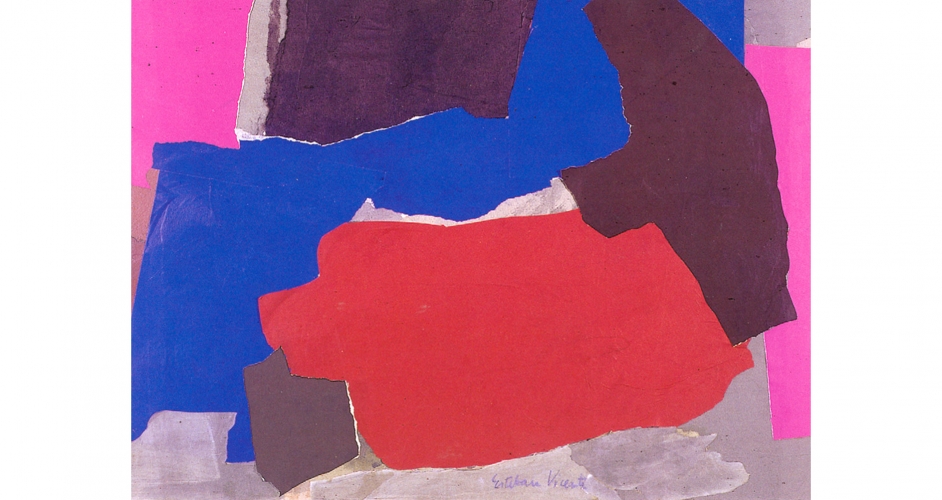
The show brings together a selection of thirty works developed over the course of four decades and gathers paintings, collages and drawings. This is the gallery’s eleventh exhibition dedicated to Esteban Vicente, an artist who is intimately related to Elvira González.
Born in Turégano, Segovia, in 1903, Vicente lived in Paris in the mid-thirties and moved to New York in 1937. In that same year, he had his first solo show in the Kleeman gallery. After a short stay in Puerto Rico, he returned to New York, where he rapidly entered the circle of artists of his generation. In 1950 his work Pink and Grey was included in the exhibition Talent 1950, curated by Clement Greenberg and Meyer Schapiro. From this moment on, he regularly exhibits in New York galleries such as Sidney Janis, Egan, Leo Castelli or André Emmerich. He was also one of the founding members of the New York School, where he taught for 36 years. Vicente died in New York in 2001.
The exhibition presents a retrospective selection of works from different stages of the painter, all produced within the School of New York. Chronologically, the exhibition parts from 1954. At the beginning of this decade, Vicente shared the studio with William de Kooning, who became his interlocutor with the School. While later he would explore the colour field technique, during the 1960s the gesture and the line were decisive for his serene style, never abrupt. During the 70s and 80s Vicente progressively evolved towards a more precise composition, with stronger elements and a great harmony in colour. Chaos and action slowed down, opening the way for a calmer approach in which texture, light and colours govern over structure and composition.
This show introduces, in addition to paintings, a wide selection of his well-known collages. In 1949, as Elizabeth Frank pointed out in her essay Esteban Vicente and the art of collage, Vicente was invited to spend the summer as a professor at the University of California in Berkeley. It was precisely the challenge of working away from his New York studio that led him to seek alternatives for production and to discover the potential of the collage. Without access to his materials and required space to paint, he began to cut the pages of the Sunday’s Newspaper’s colour supplement into strips and to paste them on paper. Experimenting during these months with this accidentally found collage technique, he discovered that he could tackle with it the same problems he had left on hold in his paintings in New York.
quepintamosenelmundo, visual arts, painting, art, contemporary art, spanish art, art online, collage
GALERÍA ELVIRA GONZÁLEZ. HERMANOS ÁLVAREZ QUINTERO, 1 28004 MADRID
Image: Only morning 1964, galería Elvira González
